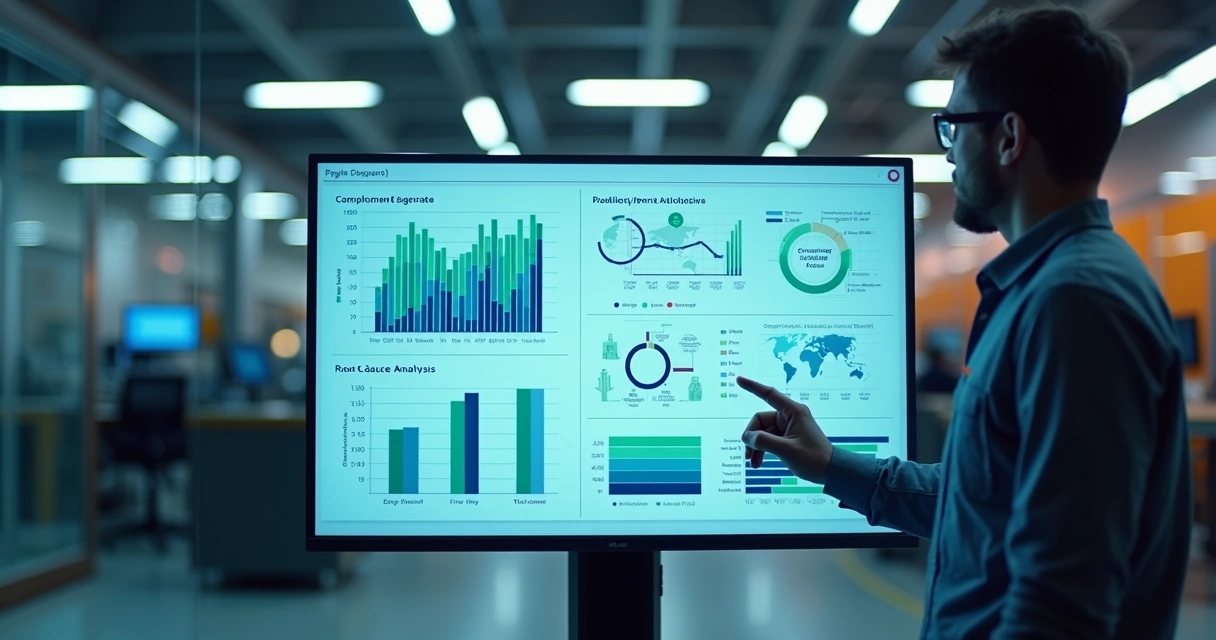Lo que nadie le dice sobre los informes de conformidad en mantenimiento

There’s a moment, usually late in the day, when the maintenance team sits silently, surrounded by stacks of paperwork and open laptops. Someone sighs, not because of the machines, but because of the report. The compliance report. If you work with industrial maintenance—especially with regulatory demands—this scene probably looks familiar.
On the surface, compliance reports in maintenance seem to be just another tick on the to-do list. But then, why do they sap so much time, energy, and, sometimes, patience? What’s hiding beneath those numbers and checklists? That’s where the stories begin—the ones almost nobody tells.
Why compliance reports feel so much heavier than they look
The truth is, compliance is a moving target. Guidelines change. Rules are updated. Each piece of machinery tells its own story in the logbooks. And behind all the forms, there’s always the lingering question: “Did we overlook something that can cost us more than just money?”
Según research from the ARC Advisory Group, up to 50% of maintenance costs are considered waste, and some 30% of preventive maintenance is performed too frequently, creating inefficiencies in processes—including reporting. Much of what is meant to make operations safer and transparent actually becomes a hidden source of stress.
The hidden battles inside compliance reporting
On a typical day, a maintenance manager juggles between urgent repairs, team questions, and the constant ping of their email. The compliance report comes last—almost always, rushed right before a deadline. But that’s not the only battle:
- Fragmented data: Bits of info live in old notebooks, emails, and spreadsheets. None of them ever synchronize perfectly.
- Changing standards: One month, there’s a new checklist. The next, something else is non-negotiable.
- Interpretation nightmares: Is the “corrective action” just a check or a full investigation? It really depends who you ask.
- Time pressure: Reports are urgent but always, somehow, in the way of the “real” job—fixing what’s broken.
The hidden message? Most teams are just trying not to sink under a wave of paperwork. And while the market for compliance solutions has grown rapidly—the global market for regulatory compliance reporting tools was valued at over $12.5 billion in 2022 and should reach $23.6 billion by 2030, growing by 8.7% yearly (according to market analysis)—the struggle at the desk or in the plant stays real.
Sometimes the hardest part isn’t the fault—it’s the paperwork after.
What nobody warned you about compliance risks
Many assume the risk is just a periodic audit or a fine. But risks are woven through every level of daily operation. Studies by JLL show the biggest compliance threats aren’t just about legal or regulatory slips—they hide in supplier relations, safety data, workforce management, contracts, even ethics.
- Was the contractor properly documented?
- Did the spare part log get lost?
- Is last year’s safety inspection still valid, or was it just… archived?
These questions, big and small, can snowball. And when they do, it’s not just about fines: it’s brand reputation, team morale, and sometimes, safety itself. Paulo Walter, an expert in asset management, adds that compliance and sustainability go hand in hand, requiring not only certifications and audits but advanced tools and ongoing attention (as discussed in industry webinars).
The silent costs: wasted time, anxious teams, and lost knowledge
Here’s something almost never shown in official documentation: the hours maintenance teams lose chasing missing signatures, correcting typos, or repeating the same investigation because the original report was rushed or unclear. All that time? It adds up. And that doesn’t include the mental load—the worry, the email chains, and the little “I hope I didn’t miss anything” thoughts each time an incident is closed.
 If you ask someone to tell you about the worst part of reporting, they’ll probably confess: it’s the feeling that you’re still behind, even if everything is perfect on paper.
If you ask someone to tell you about the worst part of reporting, they’ll probably confess: it’s the feeling that you’re still behind, even if everything is perfect on paper.
Paperwork should protect—not paralyze—the team.
Prelix and the hope for sanity in reporting
Here’s where technology enters the story, and not just as a buzzword. Tools like Prelix give teams a way to sort through the noise. With instant diagnostics, automated diagrams, and five-whys analysis, what took hours now happens in minutes. But maybe more relevant for most people is the chance to reduce rework, cut operational risks, and take away some daily anxiety—without setting aside their current systems.
Prelix slides into the background of daily routines. No need to reinvent how maintenance runs. Reports suddenly stop feeling like a punishment and become, perhaps, a kind of map: clearer, less stressful, and more useful for both compliance and real-life decisions.
Can compliance be more than just a burden?
Maybe it depends who you ask. Some people see compliance as pure pressure—a box-ticking exercise. Others, after a while, find a rhythm and use the process to catch gaps they’d have missed otherwise. Whatever your philosophy, those unseen stories keep repeating: the rush, the errors, the fear of missing out on some new rule.
Still, it’s possible—if you change a few things:
- Keep data clear and easy to share.
- Train everyone often, including about “why” certain rules exist.
- Give people tools that honestly help, not just make things prettier.
- Automate where you can (but don’t trust robots blindly, either).
- Review not just the results—but the process itself. What works? What doesn’t?
Following these steps brings the true story of compliance into the light, making it less about perfect paperwork and more about safer, stronger operations—as highlighted in studies about compliance program implementation.
In the end, compliance is about trust—on paper and in practice.
 Conclusión
Conclusión
Compliance in maintenance can’t be just about fulfilling obligations—it’s a daily exercise in risk management, data gathering, and, at its heart, caring for people and assets. The stories nobody tells about compliance reporting are everywhere: the uncertain regulations, the quiet stress, the small wins when a report actually means something, not just fills a folder. With solutions like Prelix on your side, it’s finally possible to turn those stories from hidden struggles into real progress. Want to see what difference that makes in your operation? Start transforming your maintenance team’s reality today—come learn more about Prelix.
Preguntas más frecuentes
What is a compliance report in maintenance?
A compliance report in maintenance is a document that records how an organization’s maintenance activities meet specific regulatory, legal, and internal standards. It includes information about completed work, inspections, corrective actions, and any issues discovered. These reports are used to prove adherence during audits and to ensure safe, reliable operations.
How to create a good compliance report?
Start by collecting accurate and up-to-date data about each maintenance action—when, who, what, and how it was done. Use clear language and avoid jargon. Make sure you align the report with current regulatory requirements and include records of checks, corrective steps, and signoffs. Many organizations find it easier to keep these reports reliable by using a system like Prelix that automatically logs actions and builds the reports based on standardized workflows.
Is it worth it to invest in compliance?
Definitely. Investing in compliance reduces the risk of operational shutdowns, penalties, and even workplace accidents. According to market experts, demand for compliance reporting solutions continues to grow quickly due to stricter rules and higher expectations (as shown by recent market valuations). Good compliance helps organizations avoid costly mistakes and build stronger reputations.
What are the main challenges in compliance reports?
The main challenges are gathering data from scattered sources, keeping up with changing laws, and making sure the entire process is transparent and easy to audit. Teams also struggle to avoid mistakes when under pressure, and often, incomplete records come back to create bigger problems later. Risks can also show up in unexpected ways—poorly managed data, contractor issues, or outdated policies (see research on compliance risks in maintenance).
How can I improve my maintenance compliance?
You can improve your maintenance compliance by training your team regularly, automating repetitive reporting tasks, and centralizing your data to make it accessible. Adopt structured processes that include regular audits and clearly documented procedures. Using a platform like Prelix makes all this easier by connecting information, providing automatic analysis, and simplifying reporting so you can focus on what matters—the actual maintenance work.
